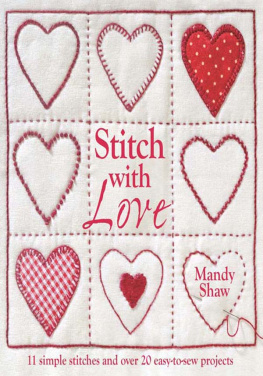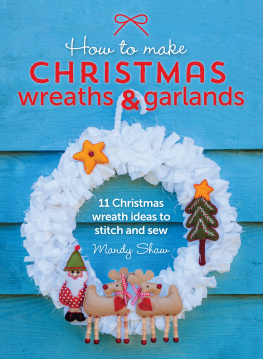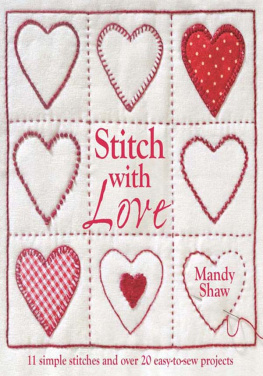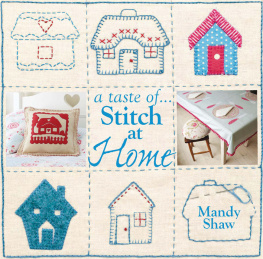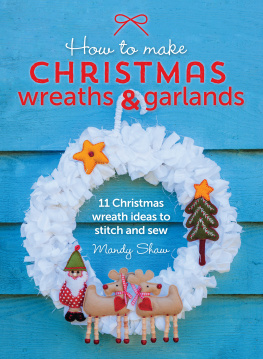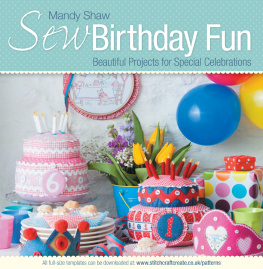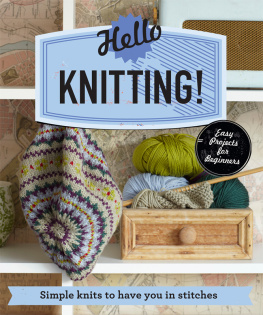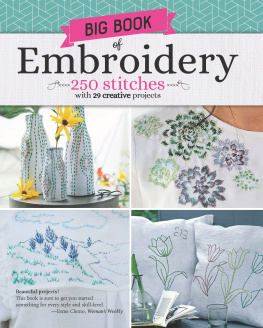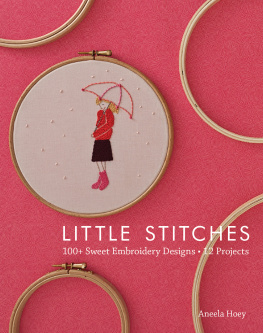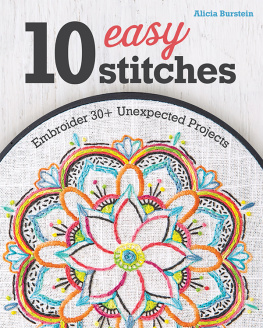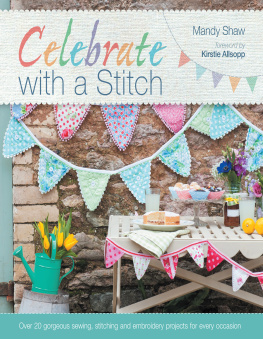Introduction
I have been sewing and creating for as long as I can remember. I have wonderful early memories of my lovely mum making toys for the school fete at the dining-room table. There was always a large bowl filled with dolls eyes and animal noses, needles and threads, buttons and lace, fur and fabric, bits of stuffing and pattern remnants. Famous for her rag dolls and their beautifully embroidered faces, she always let me have first pick of her creations before donating the rest. I loved our regular trips to the shop with the glass-fronted drawers where she would buy me a tray cloth and threads to embroider it with, and I still have those early efforts today.
I dont really remember mum teaching me to sew; it was just always part of our everyday life, and sewing seemed such a natural thing for me to do. So when I became a mother, I adorned my four beautiful children with homemade toys, hand-sewn clothes and fancy dress costumes, and brought them up in the same environment as my mother had with me. Consequently, they are all very creative and able to occupy themselves for hours with a needle, thread and a scrap of fabric. Recently my eleven-year-old son astonished me with the gorgeous blanket stitch he had sewn on a Christmas decoration he had made for his sister. When I asked him who had taught him such a neat stitch, he replied, No one, I just watched you.
My aim in this book is to encourage you to pick up a needle and thread; stitch something, make something use it, give it, love it. Discover what a really great feeling it can be. The 20 project ideas featured are all quick-and-easy to make to allow you time to focus on embroidering the wonderful designs using just 11 simple stitches. There are eight great motif chapters to get you stitching, from bunnies to buttons and cooking to Christmas. I have chosen a classic colour scheme of taupe, cream and red so that your precious makes will look just as good in ten years time as they do today. Begin by reading through Get Ready to Stitch, then pick up your needle and thread and get started. And always remember my motto:
Sew what you like, like what you sew.

Get Ready to Stitch
If you are new to stitching, this chapter will give you all the advice you need to begin with confidence. Luckily most items required for stitching can be found in an everyday sewing basket. The embroideries are hand-stitched, but a sewing machine has been used to make up the projects and I have included some best practice tips here.
I have given details of the fabrics and threads I have used with tips to help you get started with your own sewing stash. There is a guide to the different ways you can transfer embroidery motifs to your fabric, and the section on working the stitches has instructions for both right- and left-handed stitchers. So what are you waiting for? Get stitching!




Fabrics and Braids
Just so long as its natural and a needle slices through it like butter, I will stitch it. I have an ever-growing collection of fabrics and braids and I encourage you to start your fabric stash today. Look out for lovely linens and cottons wherever you go and buy pretty trims and buttons to ensure your stitching stands out from the rest.
Linens and cottons
I love to scour second-hand shops looking for opportunities to recycle clothing and household linens to build my fabric collection. I rummage for recycled tray cloths and linens whenever the opportunity arises. Ive even been known to cut up my best linen trousers (they were too tight!). Get in the habit of visiting fabric and patchwork shops to keep an eye on their stock buying bolt ends and off-cuts can help to boost your stash.
Felt
There is really only one felt that I would recommend you use and that is wool felt. Without the wool, felt will not last and is poor quality. At the very least, you should choose a wool/mix felt.
Wool blanket
The wool blanket I used for the Heart Blanket has 20% polyester in it making it machine washable. A recycled wool blanket would also be a perfect choice but take care when laundering to avoid shrinkage.
Preparing fabrics for stitching
It is advisable to wash and press your fabrics before you sew and this is particularly important for red fabrics in case the colour runs. Fabrics are often treated with a sort of starch dressing to make them easier to sew; so after washing and drying your fabrics, you may find that giving them a little spray starch will aid sewing.

Buttons and braids
I love to add decorative tapes and pretty buttons to embellish my hand-stitched projects. There is a lovely variety available, and I recommend you keep a good collection to inspire you. Ric-rac is a great favourite of mine it can be sewn on by machine or by hand using backstitch or a stitch similar to herringbone. However, there are a few pitfalls, so do follow the instructions for working with ric-rac braid in the ).


I store my ribbons and tapes in a wooden box. You can wind them around a decorative form to keep them neat; alternatively, wrap around your fingers and tie or pin to prevent them from unravelling.
Needles and Threads
I am a keen recycler of fabrics, but Id urge caution with needles and threads old needles may develop little rust spots and thread deteriorates over time. The threads I prefer are described below but do experiment with other thicknesses and types. Stitchers fall in love with their special needle when you find yours, keep it safe!
Coton broder
A favourite of mine, this single strand thread has a matt finish. It is available in different widths in several colours. I prefer No.16 which is quite thick and ideal for blanket stitching, outlining, backstitching, and quilting. Shops rarely stock the whole range but they can be ordered. To keep neat and ready to use remove the paper label and unwind the skein. Cut through all the threads at the knot. Fold in half and place the loop end over a small door knob. Divide into three and plait firmly to the end (see photo, right). Pull a new thread from the looped end. The remaining threads will stay plaited while the thread removed is the perfect length for sewing.

